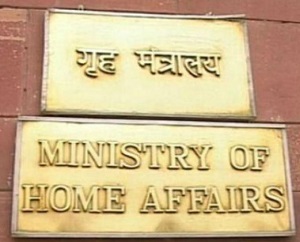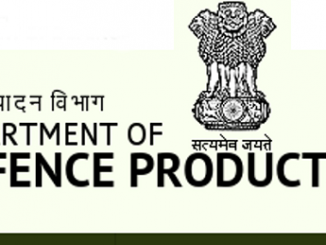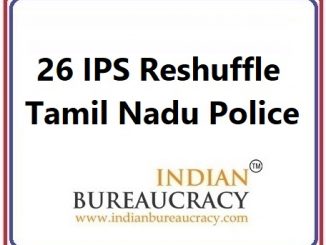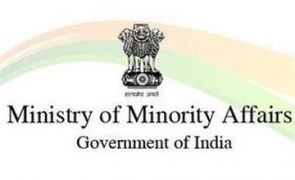
Good morning distinguished delegates, respected guests and participants.
To begin with, I would like to welcome you all to India! You are welcome to the land where ‘Heritage’ and ‘Technology‘ driven development go hand in hand.
Thank you for joining me today for this important G-20 conference on “Crime and Security in the Age of the Non–Fungible Token (NFT), Artificial Intelligence (AI) and Metaverse”.
To this esteemed gathering, I would like to emphasize the urgent need for cooperation, both at the national and international levels, to build cyber resilience in an increasingly connected world.
You all know that this year India is presiding over the G-20. The theme of India’s G-20 presidency is “Vasudhaiva Kutumbakam“ or
“One Earth – One Family – One Future ”,
Which reflects our cultural heritage. the theme is perhaps the most relevant in today‘s ‘Digital World’.
Technology has transcended all conventional geographical, political and economic boundaries. Today we live in a big global digital village.
Although, technology is a positive development in bringing human beings, communities, and countries closer, there are also some anti-social elements and global forces, that are using technology to cause economic and social harm to citizens and governments.
Therefore, this conference becomes all the more important as it can be an important global initiative towards coordinated action to make the digital world safer for all.
Prime Minister Shri Narendra Modi believes that
“ Cyber security is no longer confined to the digital world only. It has become a subject of national security – global security.”
Prime Minister Modi Ji has emphasized the humane aspect of technology. He has integrated the “Internet of Things“ with “Emotions of Things“ to ensure ‘compassion’ and ‘sensitivity’ in the use of technology.
Under Modi Ji’s leadership, India has been at the forefront of adopting emerging technologies at the grassroots level. We aim to make modern technology more accessible and affordable to all sections of society.
- Today 840 million Indians have an online presence, and by 2025 another 400 million Indians will enter the digital world.
- Internet connections have increased by 250% in 9 years.
- The cost of per GB of Data has been reduced by 96%.
- Under Pradhan Mantri Jan-Dhan Yojana:
- 500 million new bank accounts have been opened; and
- 330 million RuPay Debit Cards have been distributed.
- India leads in global digital payments with 90 million transactions in 2022.
- UPI transactions in India to date – Rs.35 trillion.
- 46% of global digital payments are done in India.
- 50 times increase in transaction volume since 2017-18.
- Direct Benefit Transfer (DBT) from ‘Jan Dhan-Aadhaar-Mobile’ (JAM).
- 1.38 Billion Aadhaar – digital identities have been generated.
- Covering over 300 schemes across 52 ministries
- An amount of Rs.300 million directly transferred to the bank accounts.
- DigiLocker stores around 6 billion documents.
- 2.2 billion covid vaccinations through Co-WIN App.
- Under BharatNet, 600,000 kilometers of Optical Fiber Cable (OFC) has been laid.
- UMANG App – Unified Mobile Application for New Age Governance with 53 million Registrations.
Initiatives for ‘digital delivery of services’ have transformed India into a ‘Digital Nation’ within a decade.
But at the same time, the possibilities of cyber threats have also increased. According to Interpol’s ‘Global Trend Summary Report’ for the year 2022, some of the cybercrime trends such as ransomware, phishing, online scams, online child sexual abuse, and hacking are posing serious threats across the globe. There is a possibility that these cyber crimes will increase manifold in the future.
In this context, this summit is a new and unique initiative of the G-20 Presidency. This is the first conference on cyber security in the G-20.
The G-20 has so far focused on digital transformation and data flow from an economic perspective, but now it is very important to understand the aspects of crime and security and find a solution.
It is our endeavor to stay ahead in the era of NFT, AI, Metaverse, and other emerging technologies by responding in a timely manner to new and emerging threats in a coordinated and cooperative approach.
Greater focus on cyber security at the G-20 forum can make a positive contribution to ensure the security and integrity of critical ‘information infrastructure’ and ‘digital public platforms’.
Discussion on cyber space security and cyber crime on the platform of G-20 will help in the development of the ‘Intelligence and Information Sharing Network’ and will give a boost to ‘Global Cooperation’ in this field.
The objective of this conference is to promote a secure and efficient international framework for empowering and securing ‘digital public goods’ and ‘digital public infrastructure’ as well as optimally harnessing the power of technology.
I am confident that in the six sessions of the two-day conference, there will be meaningful discussion on International Cooperation Framework in subjects such as
- Internet Governance,
- Security of Digital Public Infrastructure,
- Legal and Regulatory Issues related to Digital Ownership,
- Responsible use of AI and International Cooperation Framework for Dark Net.
I am glad that the international community has wholeheartedly supported this conference. Apart from G-20 members, 9 guest countries, and 2 major international organizations, INTERPOL and UNODC, as well as various international speakers are participating in this conference.
Friends, in the wake of this digital age, cyber security has become an essential aspect of global security, that requires adequate attention on its economic and geo-political implications.
It is essential to strengthen the capabilities of nations and international organizations to deal with new and emerging, traditional and non-traditional challenges, including terrorism, terror financing, radicalization, narco, narco-terror links, and misinformation in a better way.
The transformation of our security challenges from ‘Dynamite to Metaverse’ and ‘Hawala to Crypto currency’ is a matter of concern for the countries of the world. And all of us, together, have to devise a common strategy against it.
Terrorists are finding new ways to perpetrate violence, radicalize youth and raise financial resources. New methods in the form of virtual assets are being used by terrorists for financial transactions.
Terrorists are using dark-net to hide their identity and spread radical material.
We have to understand the pattern of these activities running on the dark-net, and find solutions for the same. To create a “robust and efficient operational system, we need to think coherently to crack down on the use of various virtual assets.
The Metaverse, once a science fiction idea, has now stepped into the real world. The metaverse may create new opportunities for terrorist organizations primarily for propaganda, recruitment, and training. This will make it easier for terrorist organizations to select and target vulnerable people and prepare material according to their vulnerabilities.
The metaverse also creates opportunities for true imitation of a user‘s identity, known as “deep-fakes”. Using better biometric information about individuals, criminals will be able to impersonate users and steal their identities.
Incidents ranging from ransomware attacks, sale of critical personal data, online harassment, and child abuse to fake news and misinformation campaigns with ‘toolkits’ are being carried out by cybercriminals.
At the same time, there is also a growing tendency to strategically target critical information and financial systems
Such activities are a matter of national concern, as their activities have a direct impact on national security, law and order, and the economy. If such crimes and criminals have to be stopped, then we have to think and also act by rising above the conventional geographic boundaries.
The targets in digital warfare are not our physical resources, but our ability to act online. Disruption of the online network even for 10 minutes can be fatal.
Today, all the governments of the world are promoting digital means in governance and public welfare. In this direction, it is necessary that citizens have faith in digital platforms. Insecurity in the digital space also raises questions about the legitimacy and sovereignty of the nation-state.
Our Internet vision should neither be one of excessive freedom threatening the very existence of our nations nor one of isolationist structures such as digital firewalls.
- India has set up certain ‘open-access digital public infrastructure’ models, which have become examples in the world today. India has developed Aadhaar Model for digital identity, UPI model for real-time fast payment, Open Network for Digital Commerce (ONDC), and Open Health Service Network, among others.
The world today needs a new model for digital public infrastructure to facilitate the flow of information and finance. This will facilitate the countries of the world to digitally empower their citizens.
Friends, I would also like to talk about the security measures. Many countries of the world have become victims of cyber attacks and this threat is hovering over all the major economies of the world.
According to World Bank estimates, cyber-attacks could have caused losses of around $5.2 trillion to the world during the years 2019-2023. The use of cryptocurrency by malicious threat actors further complicates its detection and prevention.
The government of India under the leadership of Prime Minister Modi has worked towards outlining a uniform cyber strategy, real-time reporting of cyber-crimes, capacity building of LEAs, designing analytical tools and setting up a national network of forensic laboratories, ensuring cyber hygiene, and spreading cyber awareness to every citizen. The Crime and Criminal Tracking Network and System (CCTNS) has been implemented in all the police stations of the country.
The Government of India has established the Indian Cyber-Crime Coordination Center (I4C) to ensure a comprehensive response against cybercrime.
The government of India has also created a massive open online courses platform called the ‘CyTrain’ portal. Perhaps, this will be the world’s largest training program in the field of cyber security.
To ensure a ‘Safe and Secure Cyberspace’, I would like to draw the attention of this house to a few points. I request you all to ponder over these points.
- There must be efforts to bring some uniformity in the laws of all countries made to counter digital crimes.
- Keeping in mind the borderless nature of cybercrimes, we must put in place a response mechanism under different laws of the countries.
- Global cooperation in this area will help in harmonizing cyber security benchmarks, best practices, and regulations.
- I hope that this conference will provide us with a concrete action plan in this direction. An integrated and stable approach to cyber security policies will facilitate interoperability, increase trust in information sharing, and reduce the agency protocol & resources gaps. The need of the hour is to share ‘ real-time cyber threat intelligence’ among member countries with active support from industry and academia to secure the nation’s critical infrastructure.
- There should be greater coordination among cyber agencies of all countries in reporting and action on cyber incidents.
- Cooperation in the investigation of cross-border cyber crimes through joint efforts to build a ‘peaceful, secure, deterrent and open’ information and communication technology environment is extremely necessary today.
- In line with the United Nations Convention on the Criminal Use of Information and Communication Technology, speedy preservation, investigation and co-ordination of evidences is essential.
- Computer Emergency Response Teams (CERTs) must be strengthened to deal with emerging threats due to emerging technologies.
- There should be a 24×7 cyber security mechanism in place for an effective ‘predictive – preventive – protective and recovery’ action.
- The nature of the Cyber Threat Landscape has spread across national boundaries, necessitating cooperation and sharing of information by nations, organizations and stakeholders to effectively combat cybercrimes.
- Time has come to build a ‘Transparent and Accountable AI and Emerging Technologies Governance Framework‘ to ensure responsible use.
- Given the rise in cybercrime involving digital currency, there is a need for a ‘dedicated common channel’ among the nations to prevent such financial irregularities.
- Third-party verification of NFT platforms will increase trust and curb criminal activities.
In conclusion, I would like to emphasize again that no single country or organization can combat cyber threats alone – it requires a united front. Our future has given us the opportunity to remain steadfast in our commitment to ‘using technology with sensitivity’ and ‘ensuring public safety and security’. However, this task cannot be handled by the government alone.
We aim to create a ‘Cyber Success World’ and not a ‘Cyber Failure World’. Together, we can harness the potential of these technologies while ensuring a ‘secure and prosperous digital future’ for all. Let us seize this opportunity to collaborate, share our ideas and forge international partnerships.
Thank you!







Leave a Reply
You must be logged in to post a comment.